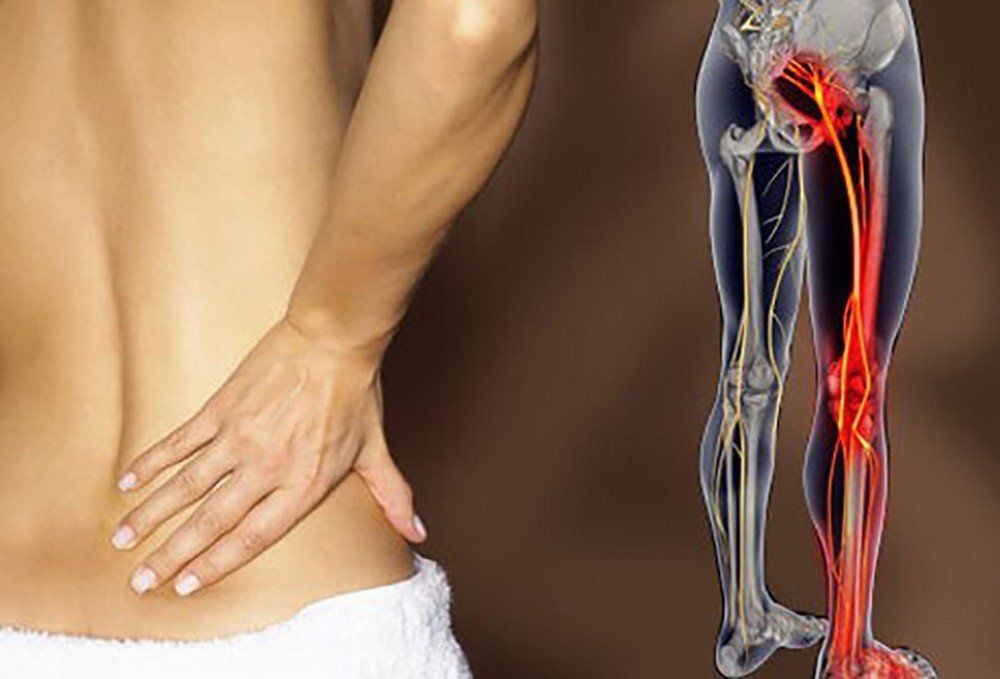What Is Sciatic Pain?
Sciatica is not a disease itself, but a symptom caused by the irritation or compression of the sciatic nerve—the longest and widest nerve in the human body. This nerve originates in the lower spine (from L4 to S3), passes through the pelvis and gluteal area, and runs down each leg to the feet.
When this nerve is compressed or inflamed, it can produce a sharp or burning pain that radiates from the lower back down to one leg, significantly affecting movement, posture, and even sleep.
Common Causes of Sciatic Pain
There are several underlying conditions that can cause sciatica, including:
-
Herniated or bulging discs
-
Spinal stenosis
-
Piriformis syndrome
-
Spondylolisthesis
-
Trauma, infections, or spinal tumors (less common)
Each of these conditions can put pressure on the sciatic nerve, triggering symptoms that require professional evaluation and care.
Symptoms of Sciatica
Symptoms of sciatica may vary in location and intensity depending on the cause, but typically include:
-
Sharp or burning pain that radiates from the lower back to one leg
-
Tingling or numbness in the buttocks, leg, or foot
-
Muscle weakness in the affected leg
-
Difficulty standing, walking, or sitting for long periods
If you experience any of these signs, it’s important to consult a healthcare provider to receive a proper diagnosis and individualized treatment plan.
Benefits of Therapeutic Massage for Sciatica
Therapeutic massage is not only a method for temporary pain relief—it also addresses the root causes of sciatic pain and supports long-term recovery. Some of the most significant benefits include:
Muscle Tension Relief
Deep tissue massage and myofascial release techniques help reduce chronic muscle tightness, especially in areas like the piriformis, glutes, and hamstrings. Releasing these tight areas reduces pressure on the sciatic nerve and relieves pain.
Neurological Stimulation
Massage stimulates skin receptors that block pain signals from reaching the brain, based on the “gate control theory of pain.” This offers immediate and lasting relief while improving nerve function.
Improved Circulation
Therapeutic massage enhances blood and lymphatic circulation, increasing oxygen and nutrients to damaged tissues and speeding up the body’s natural healing process.
Mental and Emotional Support
Massage reduces stress hormones like cortisol while increasing endorphins. This promotes relaxation, lowers anxiety and depression associated with chronic pain, and enhances overall well-being.
Choosing the Right Massage Clinic for Sciatica
Choosing the right clinic is essential for safe, effective treatment. Consider the following factors:
-
Ensure the therapists are licensed and have specialized training in neuromuscular or orthopedic massage techniques
-
Ask about their experience in treating sciatica and what methods they use
-
Assess the cleanliness, equipment, and professionalism of the facility
-
Look for clinics that offer integrated care, including physical therapy, chiropractic care, or posture training
-
Check patient reviews and testimonials for insights on outcomes and satisfaction
-
Consider the location for accessibility, especially if you have limited mobility
-
Review the pricing, packages, and whether they accept health insurance or offer flexible payment plans
An initial consultation should include a comprehensive assessment and a clear explanation of the proposed treatment plan and expected outcomes.
Effective Massage Techniques for Sciatica
Specialized clinics use advanced and evidence-based massage techniques to target sciatic pain more effectively. Some of the most common techniques include:
| Technique | Main Benefit |
|---|---|
| Deep Tissue Massage | Reduces chronic muscle tightness |
| Myofascial Release | Improves mobility and reduces nerve compression |
| Neuromuscular Therapy | Balances the nervous and muscular systems |
| Positional Release Therapy | Relaxes muscle spasms and eases pressure |
| Manual Lymphatic Drainage | Reduces inflammation and removes toxins |
Depending on your specific symptoms and diagnosis, your therapist may combine several of these approaches for optimal results.
Recommended Frequency of Massage Sessions
Effective massage therapy for sciatica should follow a structured schedule tailored to your condition:
-
Initial phase: 2 to 3 sessions per week for 2 to 4 weeks to reduce inflammation and muscle spasms
-
Maintenance phase: 1 session every 1 to 2 weeks, depending on progress
-
Prevention phase: Monthly or bi-monthly sessions to prevent recurrence and maintain mobility
Progress should be monitored throughout treatment using pain scales, mobility assessments, and patient feedback.
Contraindications and Precautions
While therapeutic massage is generally safe, there are cases where it may be contraindicated or require special precautions. These include:
Absolute contraindications:
-
Acute infections in the area to be treated
-
Deep vein thrombosis
-
Certain types of cancer (especially metastatic)
-
Unhealed fractures
-
Severe inflammation
Relative contraindications (require modified techniques and medical supervision):
-
Pregnancy (especially first trimester)
-
Advanced osteoporosis
-
Blood thinners or bleeding disorders
-
Progressive neuropathies
-
Unstable cardiovascular conditions
Your therapist should perform a full health assessment before beginning any treatment to ensure your safety.
Lifestyle and Prevention Strategies
Recovering from sciatic pain involves more than just therapy sessions. A long-term strategy should also include:
-
Maintaining proper posture while sitting, walking, and lifting
-
Regular stretching and strengthening exercises for the back and core
-
Avoiding sedentary behavior for extended periods
-
Maintaining a healthy weight to reduce pressure on the spine
-
Practicing stress management techniques such as deep breathing or yoga
Therapeutic massage can be a powerful complement to these lifestyle habits, supporting your spine and overall health.
Conclusion: A Life Without Sciatic Pain
Sciatic pain doesn’t have to control your life. Thanks to modern therapeutic massage techniques and integrated care offered by specialized clinics, it’s possible to reduce pain, improve movement, and regain your ability to enjoy everyday activities.
Don’t wait until the pain becomes unbearable. Consult with a certified massage therapist or a multidisciplinary clinic to start your recovery journey today.

